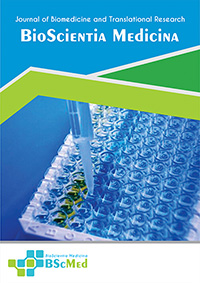Main Article Content
Abstract
Background: Placenta accreta spectrum disorder (PASD) represents a range of conditions characterized by abnormal placental adherence and invasion into the uterine wall, posing significant risks of maternal morbidity and mortality, primarily due to severe hemorrhage. The incidence has risen, largely attributed to increasing rates of cesarean deliveries. Prenatal diagnosis is crucial for optimal management. The Placenta Accreta Index (PAI), an ultrasound-based scoring system, was developed to aid in prenatal risk assessment. This study aimed to evaluate the predictive accuracy and correlation of PAI scores with final histopathological findings in patients with suspected PASD at a tertiary hospital in Riau, Indonesia.
Methods: A descriptive-analytical study with prospective data collection was conducted over six months (July-December 2024) at Arifin Achmad Regional General Hospital Pekanbaru. The study included 29 pregnant women diagnosed with placenta previa totalis and suspected PASD based on clinical and initial ultrasound findings. Patients underwent transabdominal Doppler ultrasonography between 32-34 weeks of gestation to calculate the PAI score. Following delivery (primarily via cesarean hysterectomy), placental and uterine specimens underwent histopathological examination to determine the definitive PASD classification (accreta, increta, percreta). Correlation between PAI scores and pathological severity was assessed using the Spearman correlation test. Logistic regression was used to evaluate PAI as a predictor of pathological outcomes. Sensitivity and specificity were calculated using a PAI cut-off score of ≥6. Statistical significance was set at p < 0.05.
Results: Of the 29 participants, the mean age was 32.83 ± 2.82 years, the mean parity was 3.21 ± 1.05, and a mean number of prior cesarean sections was 1.72 ± 0.70. Histopathology confirmed PASD in all cases: 23 (79.3%) were placenta accreta, 5 (17.2%) were placenta increta, and 1 (3.5%) was placenta percreta. A statistically significant positive correlation was found between PAI score and histopathological severity (Spearman's R = 0.512, p = 0.012). Logistic regression confirmed PAI score as a significant predictor of pathological outcome (β = 3.64, 95% CI 1.301–5.982, p = 0.003). Using a cut-off score of ≥6, PAI demonstrated a sensitivity of 88.6% and specificity of 83.3% for predicting PASD based on the abstract data.
Conclusion: The Placenta Accreta Index (PAI) demonstrated a significant positive correlation with the histopathological severity of Placenta Accreta Spectrum Disorders. PAI serves as a valuable and accurate predictive tool for assessing the degree of placental invasion prenatally. Its use can significantly aid clinicians in risk stratification, surgical planning, and optimizing obstetric management to improve maternal outcomes in this high-risk population.
Keywords
Article Details
As our aim is to disseminate original research article, hence the publishing right is a necessary one. The publishing right is needed in order to reach the agreement between the author and publisher. As the journal is fully open access, the authors will sign an exclusive license agreement.
The authors have the right to:
- Share their article in the same ways permitted to third parties under the relevant user license.
- Retain copyright, patent, trademark and other intellectual property rights including research data.
- Proper attribution and credit for the published work.
For the open access article, the publisher is granted to the following right.
- The non-exclusive right to publish the article and grant right to others.
- For the published article, the publisher applied for the Creative Commons Attribution-NonCommercial-ShareAlike 4.0 International License.





